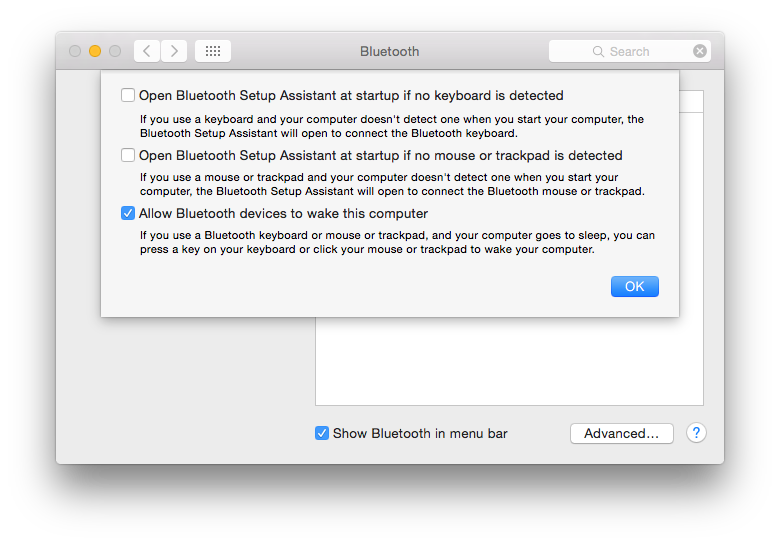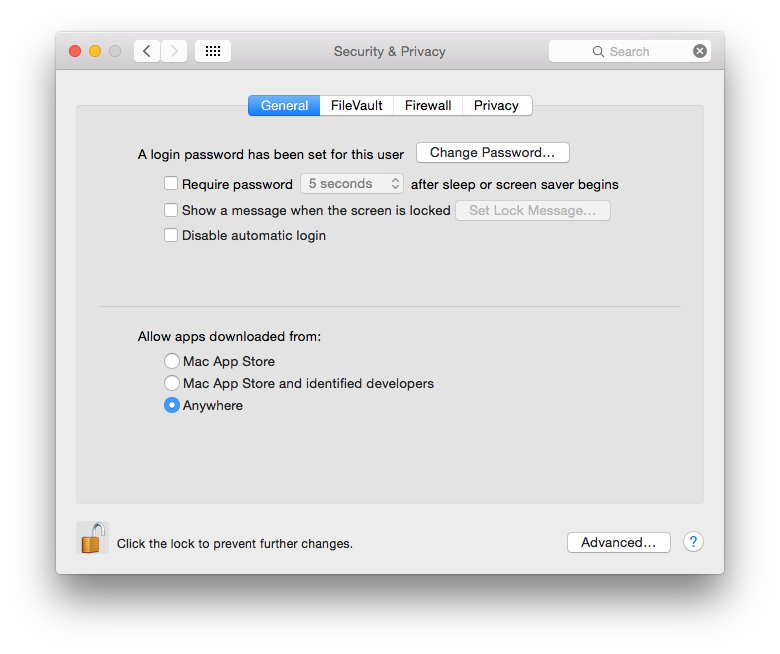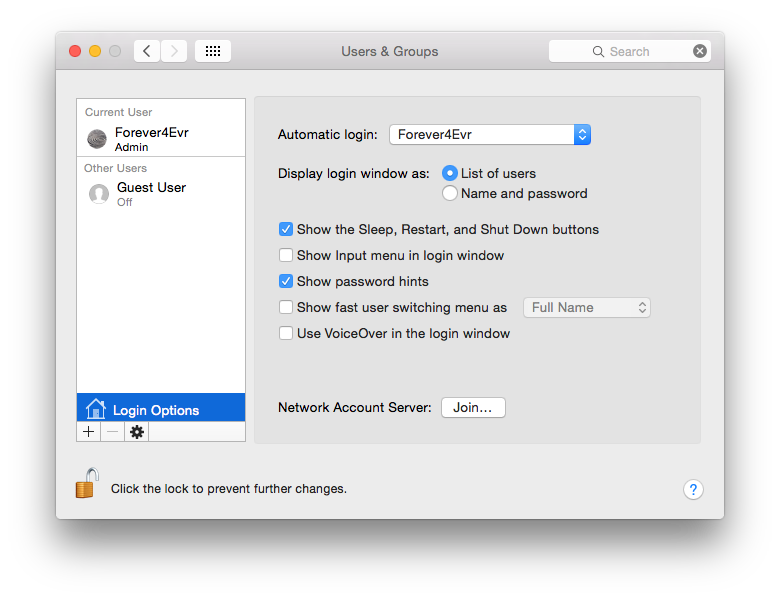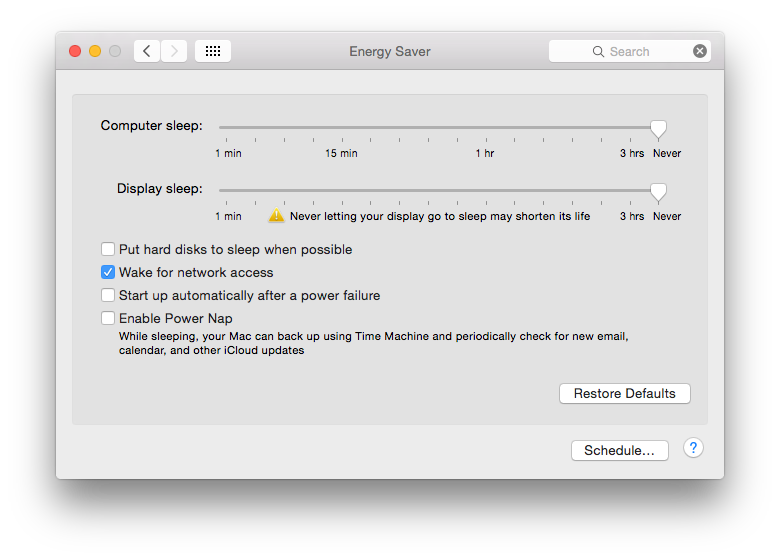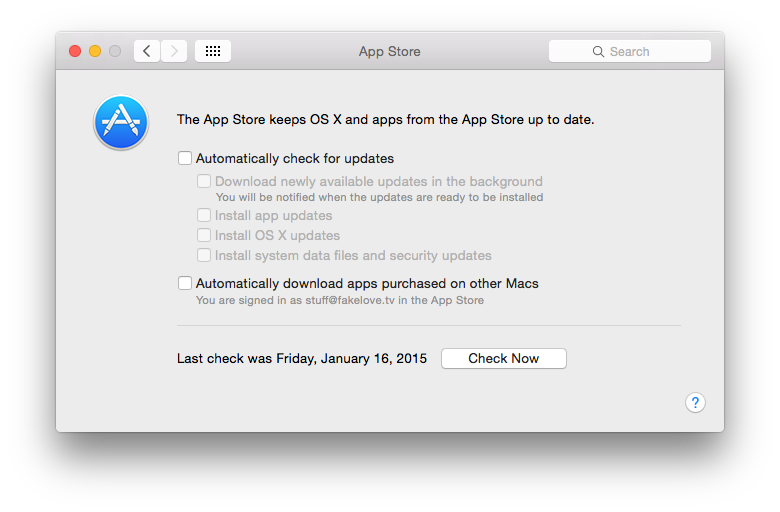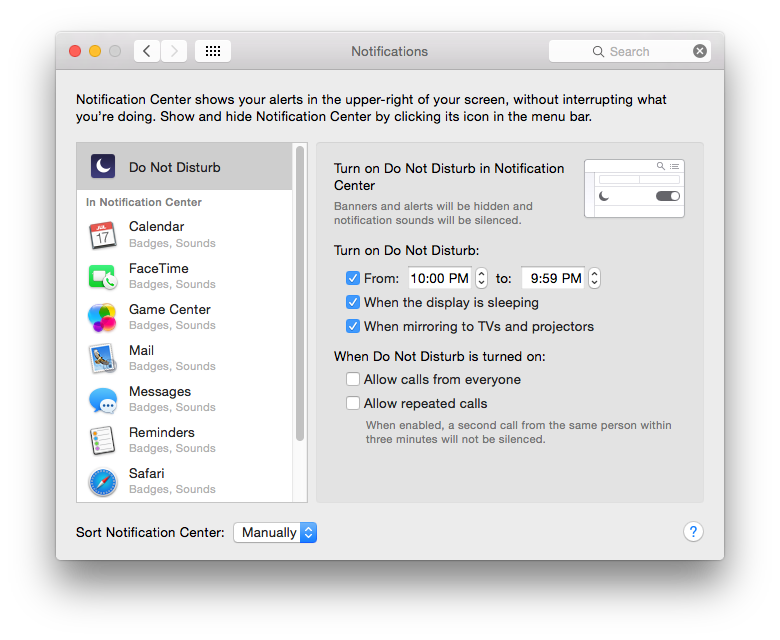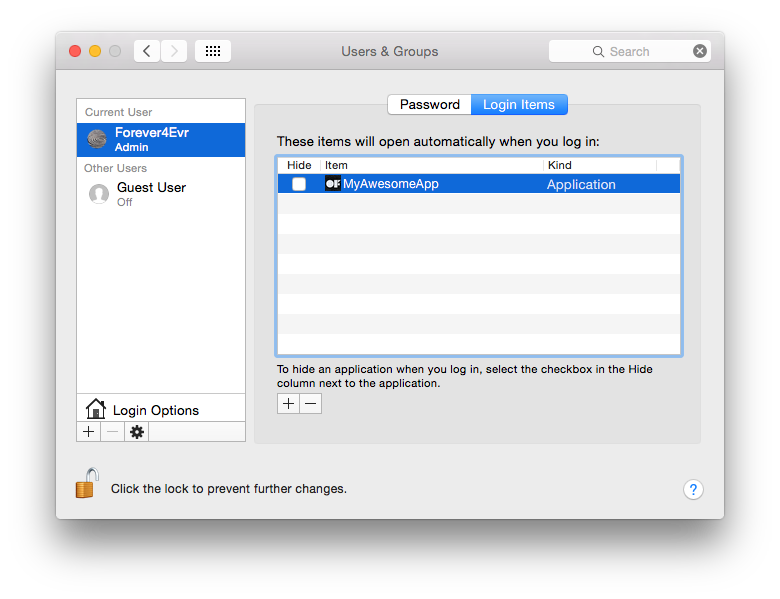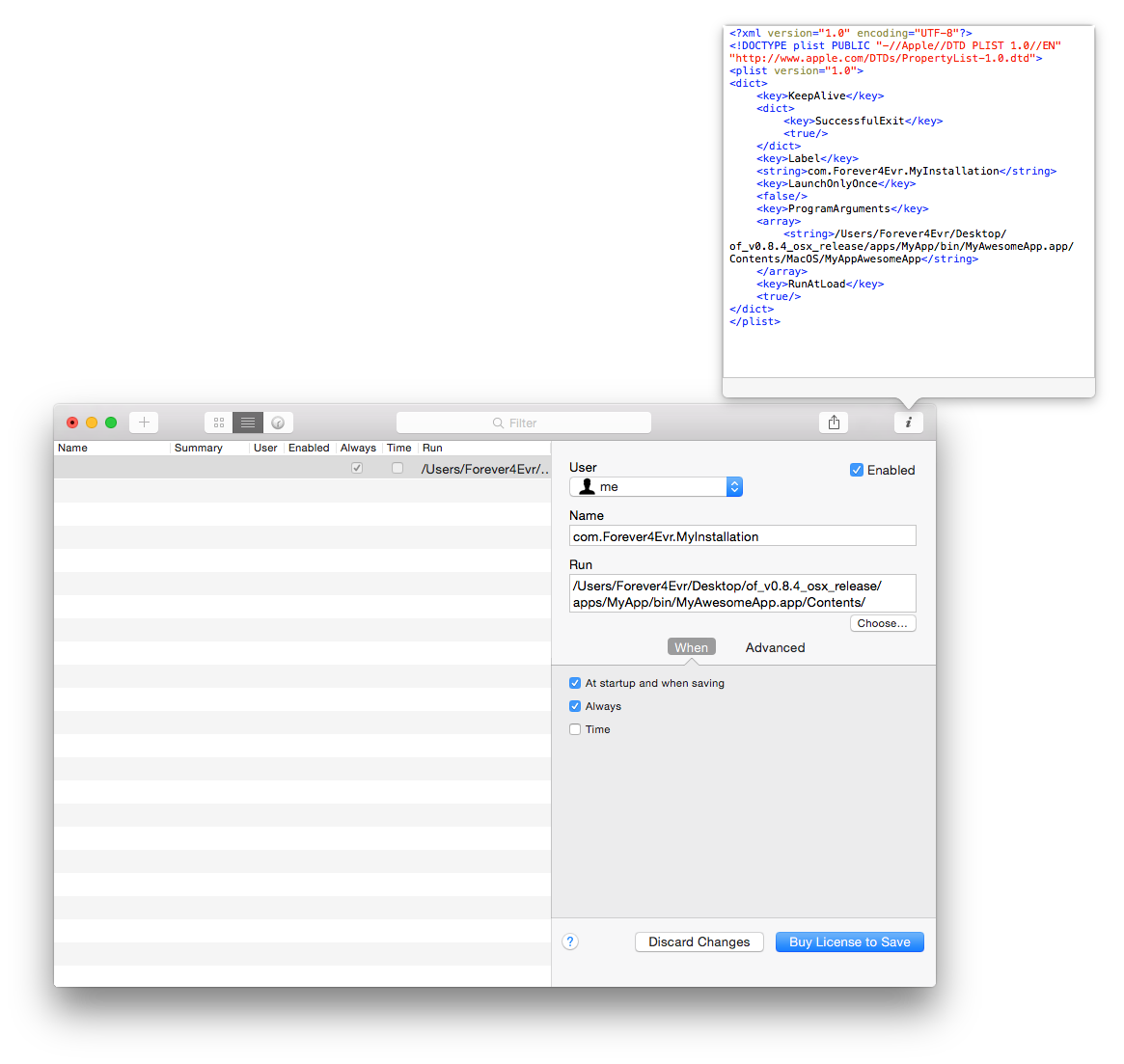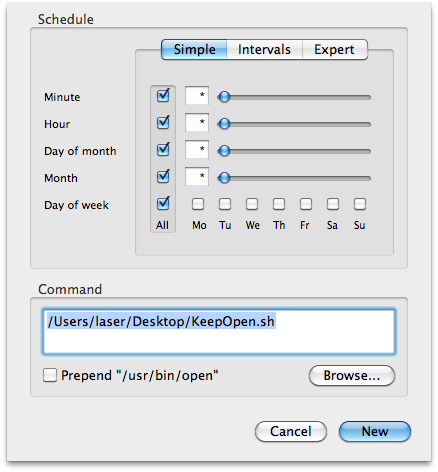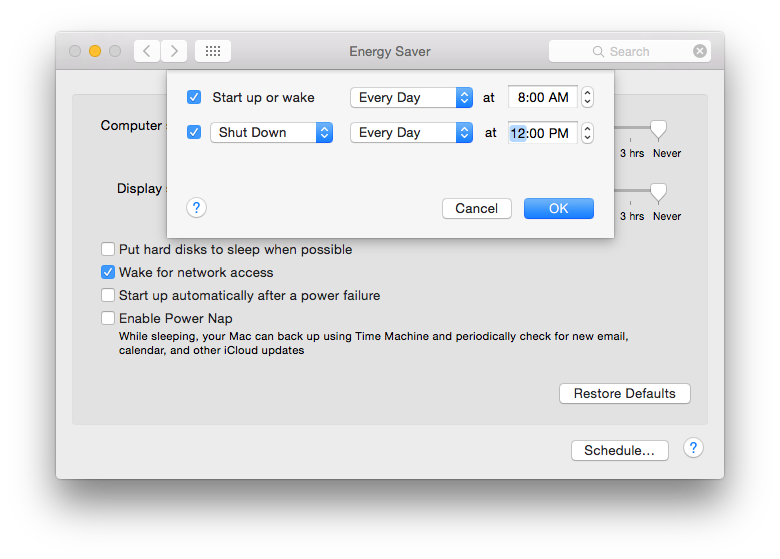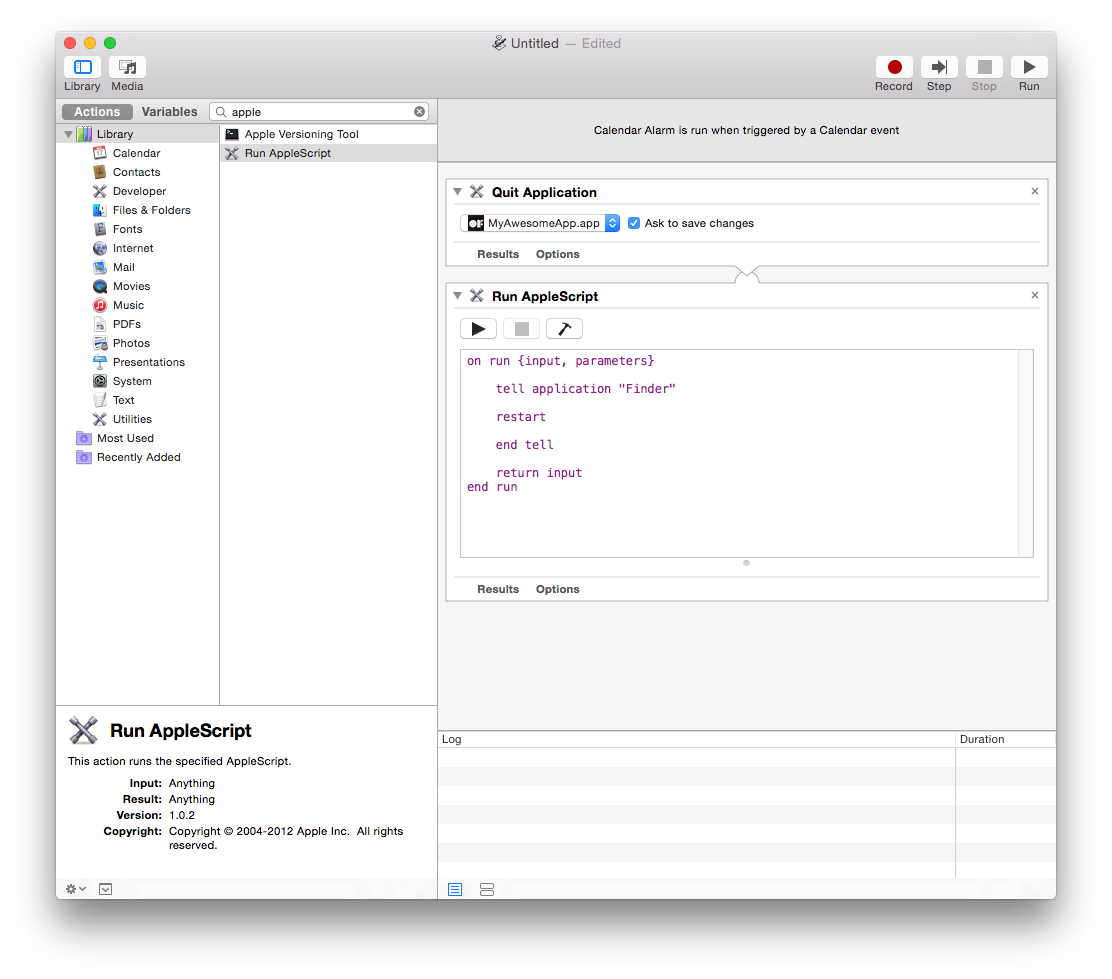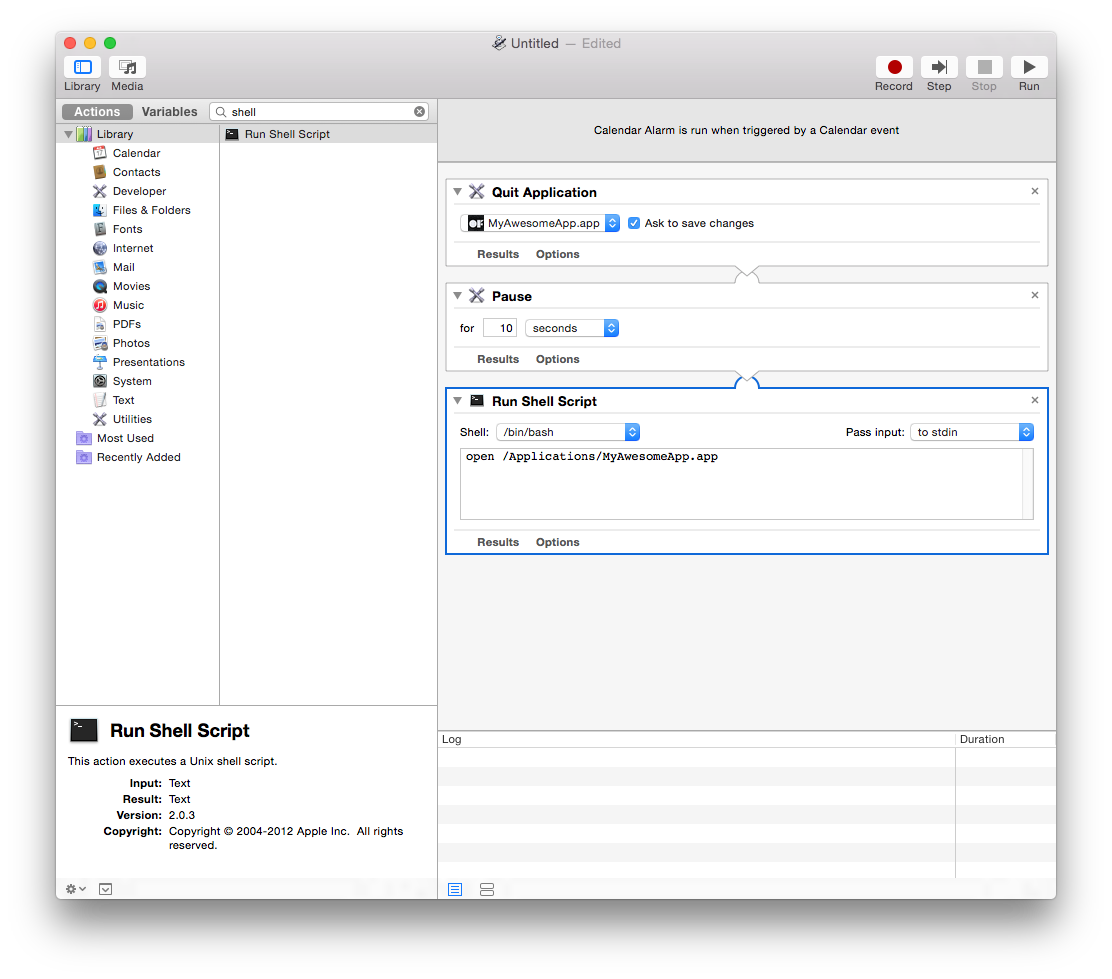Installation up 4evr
by Blair Neal
At work I recently had to set up a four installations of different configurations that would need to run all day, every day, 24 hours a day for a couple months with as few crashes or glitches as possible and without anyone going to check on them. This is something that a lot of media artists need to do all the time, and there are a bunch of different tricks and tips to keeping things up for an extended period, I figured I'd share my findings. There are alternate ways to do many of these tasks and this is only one road so please share some tips you've picked up out in the field down in the comments box below.
I had to do several searches in a couple different places to find all the information I needed to keep everything consistently up and bug free. Luckily most of the installations I was dealing with this time were fairly light in terms of resources and complications, but it's always best practices to have a safety net.
I usually run these off brand new, unboxed computers so this is sort of starting from scratch. Most of the things I point out are set to the opposite by default.
Tip: if you're doing multiple computers, do these prep steps on one of them and just boot the others into target disk mode and use something like Carbon Copy Cloner to mirror the first one on the next so everything is as consistent as possible.
Step 1: Prep your software and the computer
When building your software or whatever it might be, always keep the long running installation in mind. Plan which things will need to be adjusted by whoever is watching over the installation from the beginning (or at least don't save it for the end). In my experience, keep it as simple as possible, so that it's easy for the caretaker to get in there to fix or adjust what they need without opening Xcode and compiling or even exiting out of your app. Time you spend now to make things simple will save you hours of remote debugging when something breaks.
You'll need to go through and turn off or disable several different automatic settings to keep things from popping up over top of your application. This can differ depending on whether you're running 10.7, 10.8, 10.9, 10.10 etc etc.
Nick Hardeman has made a utility application for setting all of these attributes and more from one location - check it out here
In System Preferences:
- Desktop and Screensaver: Disable your screensaver. Set it's time to "Never." I also suggest changing your desktop background to either black/a screenshot of your app/you client's logo - you can even set these to change automatically - remember - it's not broken until someone notices :)
- Energy Saver: Turn Display Sleep and Computer Sleep to Never. Enable "Start up automatically after power failure" and "Restart automatically if the computer freezes" (these are only available in 10.7 and later)
- Users and Groups: Go to Login Options (above the padlock) and enable "Automatic Login"
- Software update: Disable automatic updates.
- Sharing: If you are running your main computer without a monitor or in an inaccessible area, don't forget to turn on File sharing and Screen sharing. This will allow you to access the computer and control it if you're on the same network (optional if you're concerned about security).
- Network: If you don't need remote access or don't need Internet access for the installation, it's not a bad idea to disable the Wifi so the "please select a wireless network" window doesn't pop up when you least expect it. You can also turn off the option to ask you to join a new network if the proper one isn't found.
- Bluetooth If running without a mouse or keyboard plugged in, sometimes you can get the annoying "Bluetooth keyboard/mouse setup" pop up over your application. You can temporality disable these by going to the advanced settings within the Bluetooth Preferences. See below for it's location in 10.6.
- Security: I would make sure that "Disable Automatic Login" is unchecked so you don't hit any surprises on reboots. If you're really paranoid, you can even disable things like the IR remote receiver that still exists on some macs and definitely on Macbooks. This would keep pranksters with Apple TV remotes from "Front Rowing" your installation. To disable, go to Security->General->Advanced (in >10.8) and "Disable remote control IR receiver".
- Notification Center: You can either disable Notification Center completely, or set your "Do Not Disturb" to basically on be on forever by setting it with overlapping times like the screenshot below
You can also disable the "This Application Unexpectedly Quit" and the subsequent bug report that comes with it by running this command in terminal OR renaming the Problem Reporter app:
sudo chmod 000 /System/Library/CoreServices/Problem\ Reporter.appAnother useful tool for modifying certain OSX .plists for disable or enabling certain things is Tinkertool You can use this to disable or enable certain things that System Preferences doesn't cover.
I would also look at this filepath and you can rename files in here to temporarily disable them on the computer you're using: /System/Library/CoreServices
You can rename "Notification Center" to "Notification Center_DEACTIVATE" or something (or you can move it) - and then you won't get any obnoxiously "helpful" Notification Center popups.
If necessary, You can also hide all of the desktop icons with this terminal command:
defaults write com.apple.finder CreateDesktop -bool falseStep 2: Boot into your software
Things get unplugged, power goes out, not everyone has budget or space for a battery backup etc etc. Above, I covered how to have everything reboot automatically after power failures or freezes, but you'll also need your app to be ready to go from boot and not leave the desktop open to prying eyes. There are many ways to have your application load automatically - the simplest is using OSX's built in tools: In the System Preferences "Accounts" panel, select "Login Items" and drag your application into there to have it open automatically on launch.
Step 3: Keep it up (champ!)
There are several ways to make sure your application goes up and stays up -
Launchd
Using Launch Daemons is an alternate way to get apps to load on boot and to continuously re-open them if they go down. Launchd plists are very useful alternatives to cron jobs and can be used to run things on a periodic basis or on calendar days. You could achieve similar results with a combination of automator and iCal, but it depends on what you're comfortable with.
Here is an Apple Doc on using Launch Agents and Launch Daemons in various ways.
The difference between a Launch Daemon and a Launch Agent (Basically whether you need it to run when a user is logged in or not…for most simple options like launching a regular app, you'll just want a Launch Agent)
Also note (!) that you may need to point your launch daemon to a file within your .app package, not just the app itself - you have to point it to the file in the MacOS folder inside the .app package (right-click your app and select "Show package Contents") Otherwise you might be wondering why the launchdaemon isn't launching your app.
A launchd example from admsyn
Of course you could make the launchd plist yourself for free from a template like above. You can read all about them with the command "man launchd.plist" typed into terminal to get an idea of what each toggle controls. One quick method to setting up Launchd is to use Lingon ($4.99 in the App Store) or Lingon X
In Lingon, hit the + to create a new launchd plist. Just make it a standard launch agent. Now Set up your plist like so:
One additional/optional thing you can add to this is to put an additional key in the plist for a "Successful Exit". By adding this, your app won't re-open when it has detected that it closed normally (ie You just hit escape intentionally, it didn't crash). Can be useful if you're trying to check something and OS X won't stop re-opening the app on you. To easily add this to the key, click the advanced tab and click the checkbox for "Successful exit" - or just add it manually as it in the above screenshot.
Shell script+Cron Job method
(I got the following super helpful tip from Kyle McDonald) )
This method is sort of deprecated in relation to the launchd method - you can run shell scripts with Lingon and launchd in the same manner as what we've got here. Shell scripting is your best friend. With the help of the script below and an application called CronniX (or use Lingon) , you will be able to use a cronjob to check the system's list of currently running processes. If your app does not appear on the list, then the script will open it again, otherwise it won't do anything. Either download the script or type the following into a text editor, replacing Twitter.app with your app's name and filepath. Don't forget the ".app" extension in the if statement!:
\#!/bin/sh
if [ $(ps ax | grep -v grep | grep "Twitter.app" | wc -l) -eq 0 ] then
echo "Twitter not running. opening..."
open /Applications/Twitter.app
else
echo "Twitter running" fiSave that file as something like "KeepOpen.sh" and keep it next to your application or somewhere convenient.
After creating that file, you'll need to make it executable. To do this, open the Terminal and in a new window type "chmod +x " and then enter the path to the shell script you just created (you can either drag the shell script into the terminal window or manually type it). It would look something like this:
4Evr-MacBook-Pro:~ Forever4Evr$ chmod +x /Users/Forever4Evr/Desktop/KeepOpen.shAfter you have made it executable, you're now ready to set it up as a cronjob. Tip: to test the script, you can change the extension at the end to KeepOpen.command as an alternative to opening it with Terminal, but the same thing gets done.
Cronjobs are just low level system tasks that are set to run on a timer. The syntax for cronjobs is outside of the scope of this walkthrough, but there are many sites available for that. Instead, the application CronniX can do a lot of the heavy lifting for you.
After downloading CronniX, open it up and create a new cronjob. In the window that opens, in the command window, point it to your KeepOpen.sh file and check all of the boxes in the simple tab for minute, hour, month, etc. This tells the job to run every minute, every hour, every day, every month. If you want it to run less frequently or at a different frequency, play around with the sliders.
Now just hit "New" and then make sure to hit "Save" to save it into the system's crontab. Now if you just wait a minute then it should open your app every minute on the minute. Maybe save this one for the very end if you have more to do :)
This is a great tool if there is an unintended crash because the app will never be down longer than a minute.
Non-Cronjob - Shell Script Method
\#!/bin/bash
while true
do
#using open to get focus
echo "Trying to open empty example"
open -a emptyExample
sleep 10
doneJust type this into a plaintext document and save it as something like "KeepMyAppAlivePlz.command" and then use chmod as above to make the file executable and then drop this in your login items as above. This one will just continuously try and open your app every 10ms, but if it is already open, the OS knows to not try opening it a second, third, fourth time.
Make sure to check the Console.app for any errors that may have come through when no one caught them, whenever you check the installation in person or remotely. This is not a fix-all for buggy programming, just a helper to keep things running smooth. The more things you can do to leave yourself notes about why the crash happened, the faster you can address the core issue.
Applescript is also a very solid choice for doing some more OS specific work in terms of having odd menus clicked or keypresses sent in some order.
Step 4: Reboot periodically
This one is a little more preventative, or maybe superstitious so hopefully someone can point out a concrete reason why this is a good idea. Depending on your app and the amount of stuff it reaches into, there could be some memory leaks or other OS bugs that you haven't accounted for. Rebooting every day or week is a good idea to keep everything tidy, system wise.
The simplest option by far would be to go to System Preferences->Energy Saver and then click "Schedule…" and enter in some values if you need to turn the computer off to rest for a longer period of time to save it some stress when it might not be used at night time or something. Heat can do funny things sometimes, so if you have a chance to get your computer to rest and the time to test it, definitely give this a shot…saves some energy too which is nice.
You could also set up another shell script with a crontab as above with CronniX that reboots the system with as often as you specify.
Another option (if you don't want to deal with the terminal and shell scripting) is to use iCal to call an Automator iCal event. This method is perhaps a little easier to schedule and visualize when you will reboot. Within Automator, create a new file with the iCal event template to do something like this:
Run it to see if it does what you expect and then save it out. When you save,it will open in iCal as an action that gets opened. Just set it to repeat as often as you'd like. You can also set things like having it email you when it reboots or runs the script.
If you'd like to just close your programs and re-open them and there is a background and foreground do something like this (pauses are so the quitting and re-opening stuff has time to actually execute):
Step 5: Check in on it from afar.
There are a bunch of options here from various paid web services (like Logmein or Teamviewer), to VNC (many options for this: RealVNC and Chicken of the VNC tend to come up a bunch) to SSHing. The choice here depends on your comfort level and how much you need to do to perform maintenance from far away. Also - see below for tips on logging the status of your app as an alternative way
Leaving a Dropbox connected to the computer and your own is super useful for file swaps between the two computers. Although most remote screensharing services have file sharing built in, Dropbox is just a nice, fairly transparent option.
Determining the IP of the machine on a dynamically allocated network can be a pain, especially in screenless/headless installations. To make this a little easier, Robb Godshaw wrote a little Automator Script that says the IP aloud using Text-to-Speech 30 seconds after the computer boots. Download link on Instructables.
Step 6: Test, test, test.
You've already tested and perfected your software for the installation, so make sure to test all of the above methods and automatic scripts in as realistic manner as you can before you leave it alone for the first day at school.
You can't account for everything, so don't beat yourself up if something does eventually happen, but this list will hopefully alleviate a little bit of frustration. Good luck!
Additional Tips: Logging
If you have an installation that runs for weeks or months, you might want a way to keep tabs on it that doesn't involve remotely logging in and checking on it. A good thing to have would be to have something on the system that writes certain info to a text file (kept on a linked Dropbox), or better write that file to a web server that you can then check.
There are a couple things you can do depending on what you want to know about the state of your installation.
There is a terminal command you can use to get a list of all of the currently running processes on your computer:
ps aux (or ps ax)(more info above ps commands here)) – Further more you can filter this list to only return applications you're interested in learning about:
ps aux | grep "TweetDeck"This will return a line like this:
USER PID %CPU %MEM VSZ RSS TT STAT STARTED TIME COMMAND
laser 71564 0.4 1.7 4010724 140544 ?? S Sun03PM 14:23.76 /Applications/TweetDeck.app/Contents/MacOS/TweetDeck -psn_0_100544477
laser 95882 0.0 0.0 2432768 600 s000 S+ 12:11PM 0:00.00 grep TweetDeckNow you have the following useful info: CPU usage, Memory usage (as percentage of total memory), Status, Time Started, Time Up
All that is left is to write this output to a text file, which you can do with a line like this:
ps aux | grep 'TweetDeck' >> /Users/laser/Dropbox/InstallationLogs/BigImportantInstall/Number6ProcessLog.txtThis line basically says - tell me the open processes (px aux) - only give me the lines that have "Tweetdeck" in them (grep Tweetdeck) - and then append them to a text file located at this location ( >> path_to_text_file)
Now we just need to make this an executable shell script and set it up as a launch daemon or cron job – see above at Step 3 to learn how to run the shell script at a regular interval using Lingon and launchd. If the app isn't running, it will only return the "grep YourAppName" process which is a good thing to log because if your app isn't open you won't know how long it's been out (nothing will be logged), but having the grep process logged will at least tell you it was checking for it. Grep will also more accurately tell you what time it checked – the other app will only give you a start time and up time.
Let's also take this one step further and say, hypothetically, that the Triplehead2Go display adapter you have is fairly wonky and you don't always get the displays or projectors to connect after reboot – or maybe a projector is shutting itself off and disrupting things. Well we can log the currently available resolutions too! Try entering the line below in your own terminal:
system_profiler SPDisplaysDataTypeThis will return a list of connected displays and some metadata about them including resolution and names.
Let's say you want to make sure you're running a resolution of 3840×720 at all times…or you want a log of resolution changes. You would do something like:
system_profiler SPDisplaysDataType | grep ResolutionThis will return "Resolution: 3840×720" which you can combine with the above lines to write it all to a text file. So here would be your shell script file if you wanted to record the currently running processes and the current resolutions:
\#!/bin/bash
ps aux | grep 'YourAppName' >> /Users/you/filepath/Install6ProcessLog.txt
system_profiler SPDisplaysDataType | grep Resolution >> /Users/you/Dropbox/Install6ProcessLog.txtAnd now you're feeling excited, maybe you want to grab a fullscreen screenshot at a regular interval too, just to make sure there is no funkiness happening that you can't see…well you could add this line to the above as well:
screencapture ~/Desktop/$(date +%Y%m%d-%H%M%S).pngThis will save a screenshot to the desktop (specify your own file path) with a formatted date and time. You may want to do this every hour instead of every 5 minutes since it's a big chunk of data and it may cause some issue with your screens. As usual – test before deploying!
Bonus points would be to create an auto-generated table and webpage that takes all of this info and puts it into a nice view that you can use to check all of your installations at a glance.
If the process logger isn't enough, we can use what we learned in that process to actually set up a system to email you if something is amiss so you don't have to manually check it. We can do this all with the command line and internal tools, it's just a more involved setup. This is going to be fairly general and will need some tuning in your specific case.
First you will need to configure postfix so you can easily send emails from the terminal – follow the instructions here as closely as possible
If you were using a gmail account you would do:
pass: yourpassword
The line in the passwd file mentioned in the article would be: smtp.gmail.com:587 [email protected]:yourpassword
Now send a test email to yourself by running: echo "Hello" | mail -s "test" "[email protected]"
Second step is to combine this new found ability to send emails from the Terminal with a process to check if your application is still running…something like the below would work with some tweaking for what you're looking to do:
\#!/bin/sh
if [ $(ps ax | grep -v grep | grep "YourApp.app" | wc -l) -eq 0 ] ; #Replace YourApp.app with your own app's name
then
SUBJECT="Shit broke"
EMAIL="InstallationSupport" #this is the receiver
EMAILMESSAGE="This could be for adding an attachment/logfile"
echo "The program isn't open - trying to re-open">$SUBJECT
date | mail -s "$SUBJECT" "$EMAIL" "$EMAILMESSAGE"
echo "YourApp not running. Opening..."
open /Applications/YourApp.app #reopen the app - set this to an exact filepath
else
echo "YourApp is running"
fiNow you just need to follow the instructions from Step 3 above to set this shell script up to run with launchd – you can check it every 5 minutes and have it email you if it crashed. You could also adapt the If statement to email you if the resolution isn't right or some other process condition.
Memory leak murderer
See this article about combining the above process with something that kills and restarts an app if it crosses a memory usage threshold
Bonus – if using MadMapper – see this link for an AppleScript that will open MadMapper and have it enter fullscreen – and enter "OK" on a pesky dialog box.
Alternate resources:
MAC OS X
This is an amazing addon for openFrameworks apps that keeps your application open even after a large range of failures: ofxWatchdog http://vormplus.be/blog/article/configuring-mac-os-x-for-interactive-installations
Nick Hardeman's utility for setting all of these from one location
Nick Hardeman's ofxMacUtils
LINUX
https://github.com/openframeworks/ofBook/blob/master/chapters/installation_up_4evr_linux/chapter.md
RASPBERRY PI
https://sfpc.hackpad.com/rPi-run-4-ever-qFgafqYPM54
WINDOWS:
If you're looking for help with this task with Windows, check out this awesome script StayUp from Stephen Schieberl. Also for Windows: http://www.softpedia.com/get/System/File-Management/Restart-on-Crash.shtml and this tool for scripting OS operations on windows http://www.nirsoft.net/utils/nircmd.html
Check out this great step by step from EVSC: http://www.evsc.net/home/prep-windows-machine-for-fulltime-exhibition-setup
